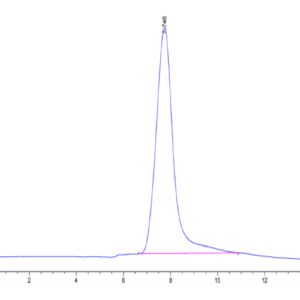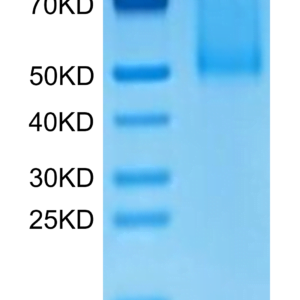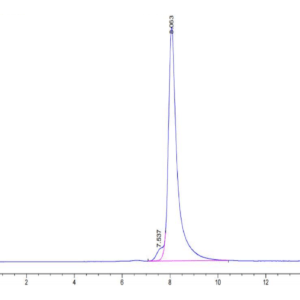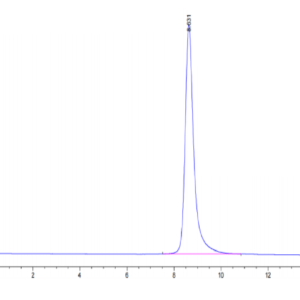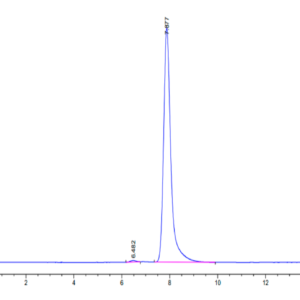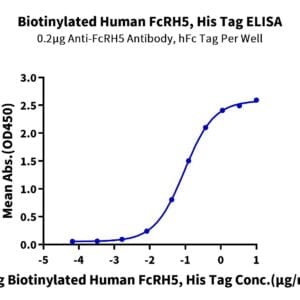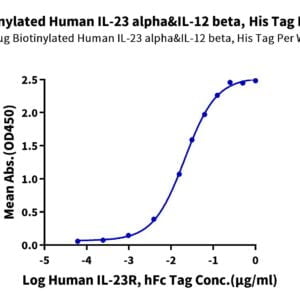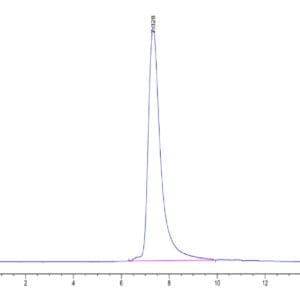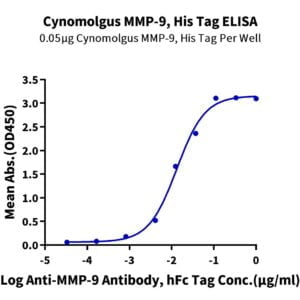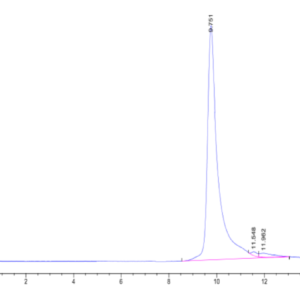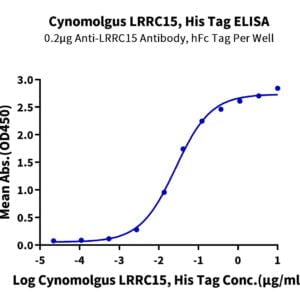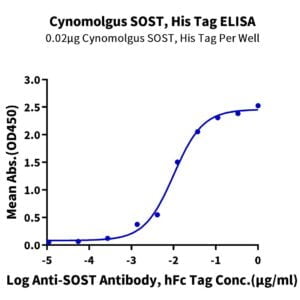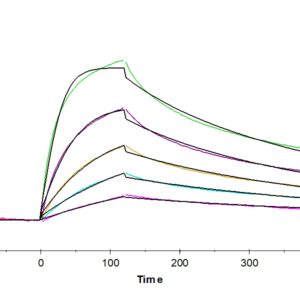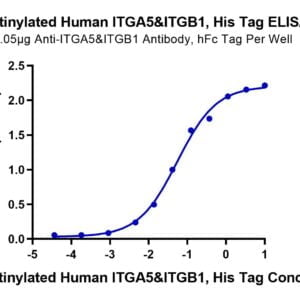| Weight | 1 lbs |
|---|---|
| Dimensions | 9 × 5 × 2 in |
| accession | Q9ET39 |
| express system | HEK293 |
| product tag | C-His |
| purity | > 95% as determined by Tris-Bis PAGE;> 95% as determined by HPLC |
| background | SLAMF6 (signaling lymphocyte activation molecule 6) (Ly108 in mice, NTB-A or SF2000 in humans) is a homophilic receptor belonging to the superfamily immunoglobulin (Ig) domain-containing molecules. It is known to be widely and exclusively expressed on hematopoietic cells. The SLAMF6 intracellular portion is characterized by two ITSMs that act as binding sites for adaptor molecules such as SAP and EAT-2. |
| molecular weight | The protein has a predicted MW of 24.03 kDa. Due to glycosylation, the protein migrates to 40-55 kDa based on Tris-Bis PAGE result. |
| available size | 100 µg, 500 µg |
| endotoxin | Less than 1EU per μg by the LAL method. |
Mouse SLAMF6/NTB-A Protein 2516
$315.00 – $1,050.00
Summary
- Expression: HEK293
- Pure: Yes (HPLC)
- Amino Acid Range: Glu31-Asn239
Mouse SLAMF6/NTB-A Protein 2516
| protein |
|---|
| Size and concentration 100, 500µg and lyophilized |
| Form Lyophilized |
| Storage Instructions Valid for 12 months from date of receipt when stored at -80°C. Recommend to aliquot the protein into smaller quantities for optimal storage. Please minimize freeze-thaw cycles. |
| Storage buffer Shipped at ambient temperature. |
| Purity > 95% as determined by Tris-Bis PAGE |
| target relevance |
|---|
| SLAMF6 (signaling lymphocyte activation molecule 6) (Ly108 in mice, NTB-A or SF2000 in humans) is a homophilic receptor belonging to the superfamily immunoglobulin (Ig) domain-containing molecules. It is known to be widely and exclusively expressed on hematopoietic cells. The SLAMF6 intracellular portion is characterized by two ITSMs that act as binding sites for adaptor molecules such as SAP and EAT-2. |
| Protein names SLAM family member 6 (Lymphocyte antigen 108) (CD antigen CD352) |
| Gene names Slamf6,Slamf6 Ly108 |
| Mass 10090Da |
| Function Self-ligand receptor of the signaling lymphocytic activation molecule (SLAM) family. SLAM receptors triggered by homo- or heterotypic cell-cell interactions are modulating the activation and differentiation of a wide variety of immune cells and thus are involved in the regulation and interconnection of both innate and adaptive immune response. Activities are controlled by presence or absence of small cytoplasmic adapter proteins, SH2D1A/SAP and/or SH2D1B/EAT-2 (PubMed:19648922). Triggers cytolytic activity only in natural killer cells (NK) expressing high surface densities of natural cytotoxicity receptors (By similarity). Positive signaling in NK cells implicates phosphorylation of VAV1. NK cell activation seems to depend on SH2D1B and not on SH2D1A (By similarity). In conjunction with SLAMF1 controls the transition between positive selection and the subsequent expansion and differentiation of the thymocytic natural killer T (NKT) cell lineage (PubMed:18031695). Promotes T cell differentiation into a helper T-cell Th17 phenotype leading to increased IL-17 secretion; the costimulatory activity requires SH2D1A (By similarity). Promotes recruitment of RORC to the IL-17 promoter (By similarity). In conjunction with SLAMF1 and CD84/SLAMF5 may be a negative regulator of the humoral immune response (PubMed:25926831). In the absence of SH2D1A/SAP can transmit negative signals to CD4(+) T-cells and NKT cells. Negatively regulates germinal center formation by inhibiting T-cell:B-cell adhesion; the function probably implicates increased association with PTPN6/SHP-1 via ITSMs in absence of SH2D1A/SAP (PubMed:22683125). However, reported to mediated T-cell adhesion, to participate in stable T-cell:B-cell interactions and to be involved in maintaining B-cell tolerance in germinal centers and in preventing autoimmunity (PubMed:20153220, PubMed:25801429). Involved in regulation of autoimmunity. Isoform 3 may be suppressor of pathogenic T-cell proliferation (PubMed:21422172). |
| Catalytic activity #N/A |
| Subellular location Cell membrane ; Single-pass type I membrane protein . |
| Tissues Expressed on hematopoietic cells. Isoform 3 is expressed in thymocytes and B lymphocytes of C57Bl/6 strain. |
| Structure Homodimer. Interacts with PTN6 and, upon phosphorylation, with PTN11 and SH2D1A/SAP (By similarity). |
| Post-translational modification Phosphorylated. |
| Domain Th |
| Target Relevance information above includes information from UniProt accession: Q9ET39 |
| The UniProt Consortium |
Data
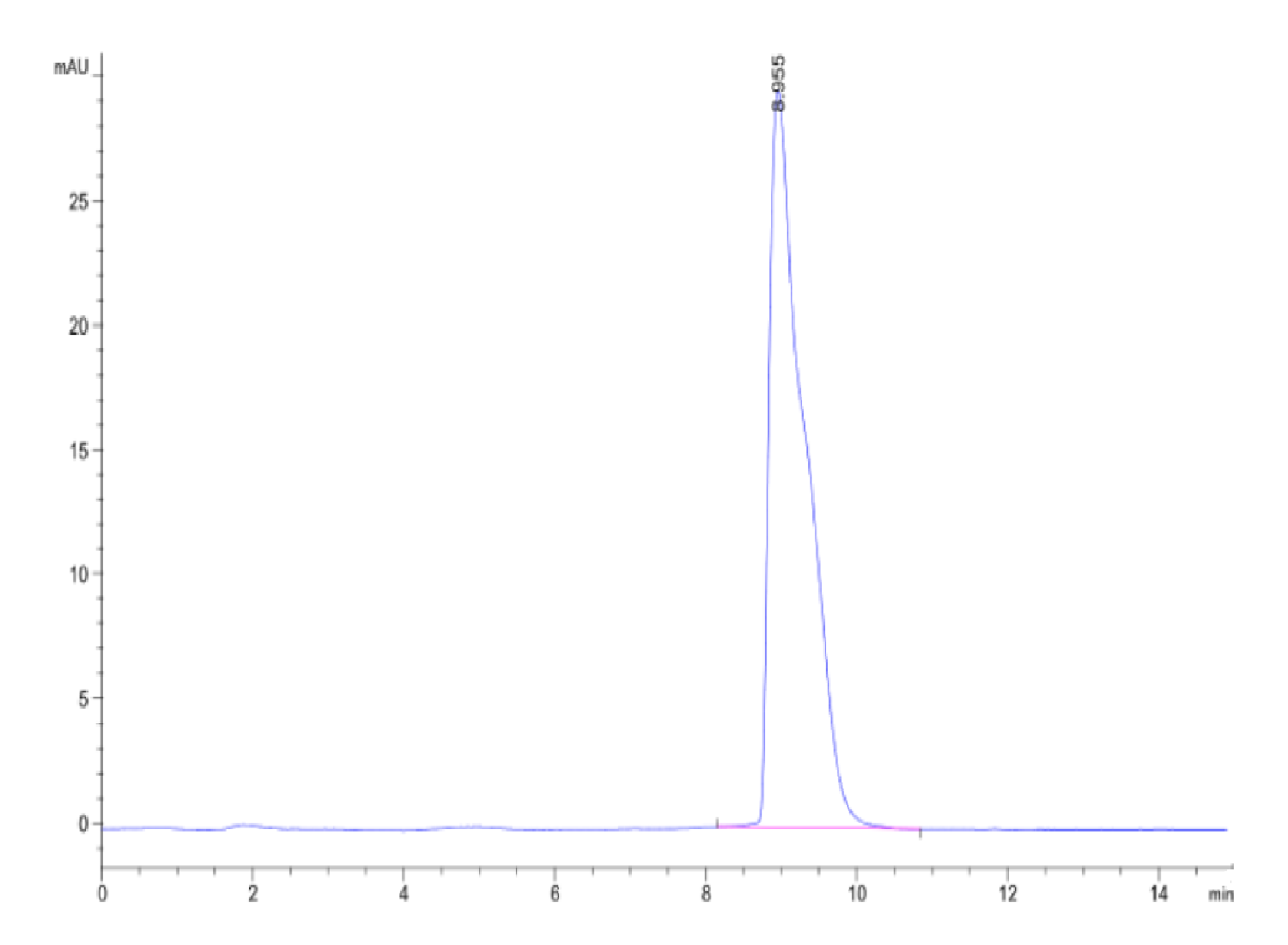 |
| The purity of Mouse SLAMF6 is greater than 95% as determined by SEC-HPLC. |
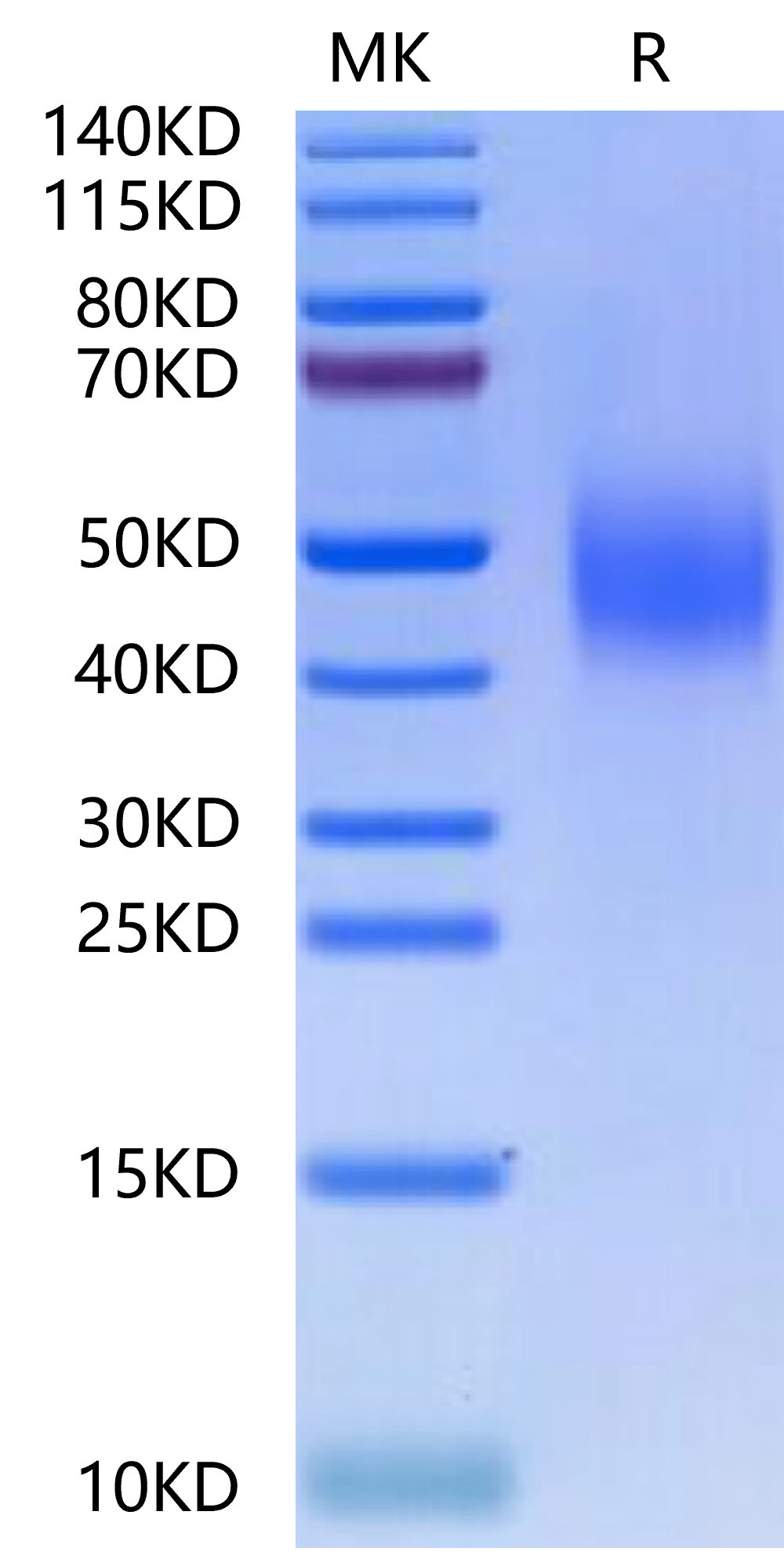 |
| Mouse SLAMF6 on Tris-Bis PAGE under reduced condition. The purity is greater than 95%. |
Publications
Publications
| pmid | title | authors | citation |
|---|---|---|---|
| We haven't added any publications to our database yet. | |||
Protocols
| relevant to this product |
|---|
Documents
| # | ||
|---|---|---|
| Please enter your product and batch number here to retrieve product datasheet, SDS, and QC information. | ||
